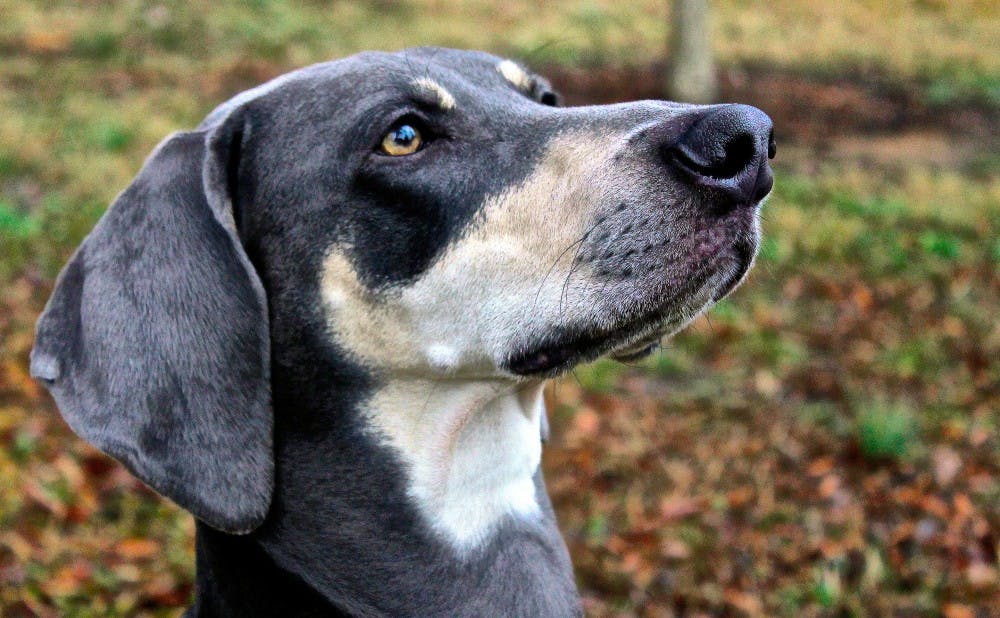Brad Taicher, a Duke Hospital pediatrics anesthesiology specialist, recently operated on seven-year-old Kaelyn Krawczyk and allowed her service dog, JJ, into the operating suite to help monitor her status throughout the surgery. Krawczyk, who is diagnosed with mastocytosis, can suffer from anaphylactic shock in response to the simplest of stimuli, and JJ’s main job is to alert her parents whenever Krawczyk begins to suffer a reaction.
After observing one of Krawczyk reactions during an in-clinic visit, Taicher began to think about the potential of having JJ around in similar situations.
“The idea was always in our head,” Taicher said. “If the benefit of having JJ with us exceeded the risk of having JJ with us, we all thought it would be a great idea.”
Although the surgery Krawczyk underwent for evaluation of her ureters is fairly common and harmless for most patients, her condition had the potential to cause a life-threatening reaction to the anesthetics throughout the procedure. JJ would be a much faster responder in case of an anaphylactic event than the medical equipment that monitors her vital sigs
Taicher said the room JJ was in was a medical suite as opposed to an operating room, which permits certain areas other than the isolated surgery region to be clean but not necessarily sterile. In operating rooms, however, dogs cannot be allowed because everything must be sterilized.
Eyes Ears Nose and Paws, the organization that trained JJ, offers many service dogs to people who require assistance due to their medical conditions. As part of their medical alert program, dogs can be trained to detect changes in blood sugar for people who are diabetic.
Program Director Deb Cunningham explained that the organization's service dogs are reared as puppies at EENP for these specific needs. When Krawczyk's parents initially came to her for a simple assistance alert dog, Cunningham believed that they could go one step further using a similar training regime as the diabetic alert dogs.
“I asked them if they were interested in trying to see if we could train a dog to actually detect her reactions,” Cunningham said. “They were interested, we did it, and it worked.”
Cunningham believes that dogs as opposed to other domesticated pets are “hypersocial," or highly socially engaged with humans, and their interest in interacting with humans has placed them in a very important spot in our society.
Similarly, researchers at Duke’s Canine Cognition Center have been closely studying the coevolution of dogs with humans. Lab Manager Kerri Rodriguez has looked at the cognitive abilities of normal and service dogs, though much of the work is still in developmental stages. Rodriguez explained that while the physiological mechanisms by which dogs sense these changes are not exactly clear, it is evident that there is some inherent wiring in dogs that makes them innately attuned to humans.
“Without any human experience, a puppy will still be able to follow a point to find food for example,” Rodriguez said. “Even dogs that have never been reared with humans can follow a point to pick up on things that humans do…. There’s something neurologically going on where they actually changed in response to living with us.”
Taicher noted that having JJ present in the room helped Krawczyk's procedure finish relatively safely, but he said that future uses of service dogs in scenarios like this would have to overcome the challenge of sterility in operating rooms. Taicher, however, believes that dogs may hold the key to a better medical future.
“We need to learn from these dogs and understand what it is they’re detecting and use this information to make advances in medicine, so that we can better understand how to monitor and detect these conditions,” Taicher said.
Get The Chronicle straight to your inbox
Signup for our weekly newsletter. Cancel at any time.

